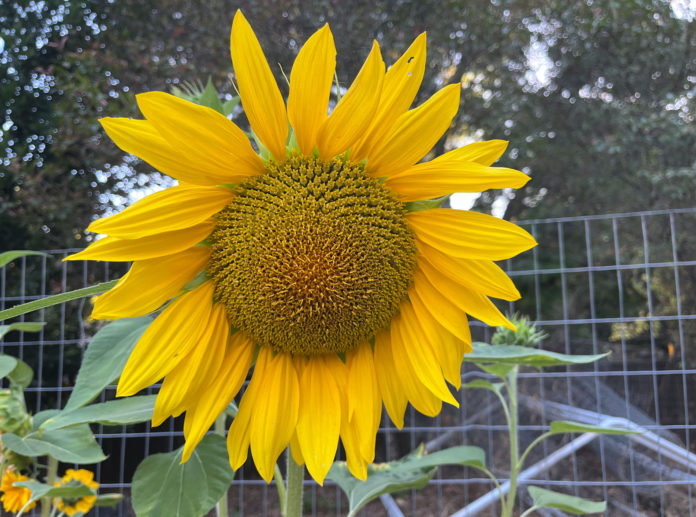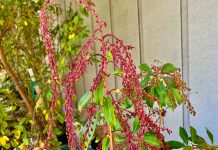It’s been a cooler summer than the past few years. I’ve probably jinxed it now by mentioning that, thereby ensuring August will be a scorcher. But for now plants are happy they haven’t had to cope much with the “dreaded over-86-degree” weather when they can’t photosynthesize. It’s a good year also for those gorgeous dahlias and sunflowers, too. So will we have “The Dog Days of Summer” this year?
The Romans associated the weather from 20 days before to 20 days after the conjunction of the “Dog Star” with the hot days of summer. This falls between July 24 and Aug. 24. The name “Dog Star” comes from the ancient Egyptians who called Sirius, the Dog Star, after their god, Osiris. His head in pictograms resembles that of a dog. When the Dog Star rises in conjunction with the sun, some felt the combination of the brightest luminary of the day—the sun—and the brightest star of the night—Sirius—was responsible for the extreme heat experienced during the middle of the summertime. Since Sirius is the brightest star in the night sky, it’s reasonable to guess that it adds some heat to the earth, but the amount is insignificant. We now know the heat of summer is a direct result of the earth’s tilt, but now you know… the rest of the story.
As summer rolls along you may become more aware of the different microclimates in your garden as some of your plants that used to get along just fine might be showing signs of stress. Taking note of these changes in the performance of your plants is what makes for a more successful landscape. When the weather cools toward the end of September, you will want to move or eliminate those plants that aren’t thriving. Be sure to keep a thick layer of mulch on the soil around your plants to conserve that precious water you do allocate to each of your irrigation zones.
One thing I notice when I visit gardens for a consultation is the existing drip system has not been modified for many years, if ever, to allow for the growth of the plants. The emitters, which were originally placed at the base of each plant, are not even close to covering the current size of the root zone. The crown of the plant is getting overwatered with each cycle but the rest of the plant is bone dry. Time to add more emitters and move them away from the middle of the plant. No sense wasting water that’s not doing the plant much good.
The dog days of summer may be affecting our gardens, but it doesn’t have to stop us from being out in the garden. The joy of gardening can take many forms, including adding a wind chime, bird feeder or bird bath. Groom plants that need some cleanup. Many perennials benefit from a little haircut at this time of year to extend their blooming into the fall season. Santa Barbara daisies fall into this category. Lavenders will keep their compact shape by pruning a third of their branches now. This forces new growth in the center so the plant doesn’t get woody.
Deadhead flowering annuals and perennials as often as you can. Annuals like marigolds, petunias, zinnia and cosmos will stop blooming if you allow them to go to seed. The same is true of repeat blooming perennials like dahlia, scabiosa and lantana. These plants know they’re on this earth to reproduce. If they get a chance to set seed, the show’s over—they’ve raised their family. Try to remove fading flowers regularly and you’ll be amply rewarded.
Jan Nelson, a landscape designer and California-certified nursery professional, will answer questions about gardening in the Santa Cruz Mountains. Email her at ja******@*ol.com, or visit jannelsonlandscapedesign.com.













